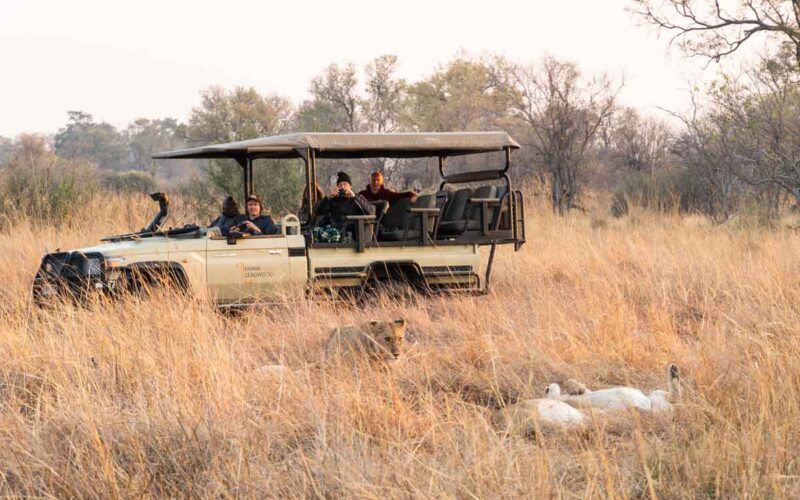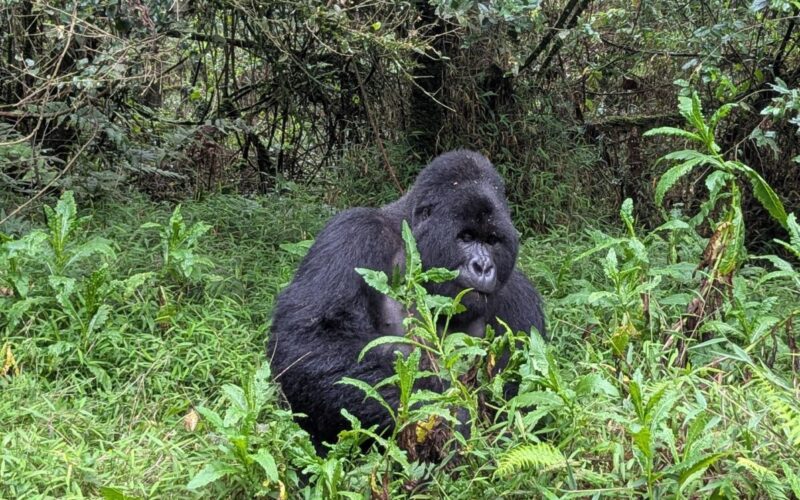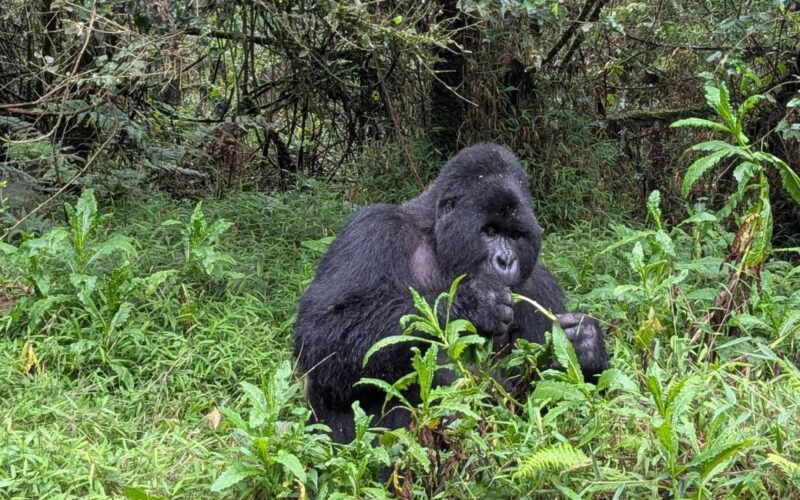
Water Rafting in Uganda
June 23, 2023
White Water Rafting in Uganda
August 10, 2023Why is Rwanda Called the Land of Thousand Hills?
Rwanda is often called the “Land of a Thousand Hills” due to its unique and breathtaking topography. This nickname accurately describes the country’s geography, which is characterized by a series of rolling hills and mountains that stretch across its landscape.
Rwanda is located in the eastern part of the African continent, bordered by Uganda to the north, Tanzania to the east, Burundi to the south, and the Democratic Republic of the Congo to the west. The country is situated on the Albertine Rift, which is part of the Great Rift Valley system.
The land in Rwanda is hilly and mountainous, with an average elevation of around 1,500 meters (4,900 feet) above sea level. The country is part of the East African Highlands, and its terrain is dominated by a series of parallel ridges and valleys, resulting in a picturesque landscape of rolling hills. The hills are covered with lush green vegetation, terraced farms, tea and coffee plantations, and small villages.
The “Land of a Thousand Hills” nickname not only describes the physical landscape of Rwanda but also reflects the resilience and strength of its people. Despite the challenging terrain, the Rwandan population has managed to build thriving communities and develop innovative agricultural techniques, such as terraced farming, to make the most of the hilly environment.
Additionally, the nickname carries cultural and historical significance. The hills have played an essential role in shaping Rwanda’s history, serving as natural boundaries between different regions and communities. They have also influenced the traditional settlement patterns and contributed to the unique cultural identity of the Rwandan people.
Overall, the nickname “Land of a Thousand Hills” is a poetic and fitting description of Rwanda’s captivating landscape and the resilience of its people in adapting to and thriving in a challenging environment.

Rwanda Gorilla Safari
Where to Adventure in the Land of a thousand hills?
Rwanda, known as the “Land of a Thousand Hills,” offers numerous adventurous and scenic destinations to explore. These are just a few examples of the adventurous destinations in Rwanda. The country’s beautiful landscapes, national parks, and cultural sites provide ample opportunities for exploration, outdoor activities, and memorable experiences.
Here are some of the top places for adventure in Rwanda:
Volcanoes National Park
Located in the Virunga Mountains, this national park is famous for its population of endangered mountain gorillas. Trekking to see these magnificent creatures in their natural habitat is a once-in-a-lifetime experience.
Nyungwe Forest National Park
This ancient rainforest is a haven for nature lovers and adventurers. It offers various activities such as canopy walks, chimpanzee tracking, bird watching, and hiking trails that take you through the lush vegetation and beautiful waterfalls.
Lake Kivu
This picturesque lake on Rwanda’s western border offers a range of water-based activities. You can go kayaking, boating, swimming, or simply relax on the sandy beaches while enjoying the scenic views of the surrounding hills.
Akagera National Park
Located in the east of Rwanda, Akagera National Park is a diverse wildlife destination. It is home to a wide variety of animals, including elephants, lions, zebras, giraffes, and numerous bird species. Visitors can enjoy game drives, boat safaris, and guided nature walks.
Musanze Caves
These ancient caves, located near Volcanoes National Park, provide an exciting underground adventure. Explore the network of tunnels, chambers, and volcanic formations while learning about the caves’ geological and historical significance.
Congo Nile Trail
For hiking enthusiasts, the Congo Nile Trail is a scenic trek that spans approximately 227 kilometres (141 miles) along Lake Kivu. The trail offers stunning views, passes through local villages, and allows you to experience Rwanda’s rural life and culture up close.
Bisoke Mountain
If you’re up for a challenging hike, Mount Bisoke is a dormant volcano that offers rewarding panoramic views from its summit. The hike takes you through bamboo forests, and at the top, you’ll find a crater lake.
Rugezi Marsh
This wetland area, located in the northern part of Rwanda, is a paradise for birdwatchers. It hosts a diverse range of bird species, including the rare and endangered shoebill stork.

Rwanda Gorilla Trekking Safari
Gorilla Trekking in The Land of a Thousand Hills?
Yes, gorilla trekking is one of the most popular and exciting activities in the “Land of a Thousand Hills,” also known as Rwanda. The country is renowned for its efforts in gorilla conservation and is home to a significant population of endangered mountain gorillas.
Gorilla trekking in Rwanda offers a unique and unforgettable wildlife experience. It allows you to connect with these incredible creatures in their natural habitat while contributing to their conservation. It’s important to remember that gorilla trekking is a sensitive activity, and responsible tourism practices are crucial to ensuring the long-term survival of these endangered species.
Here’s what you need to know about gorilla trekking in Rwanda:
- Volcanoes National Park: Volcanoes National Park, located in the Virunga Mountains, is the prime destination for gorilla trekking in Rwanda. It’s a protected area that encompasses a portion of the Virunga Mountain range, and it’s where Dian Fossey conducted her pioneering research on mountain gorillas.
- Permits: Gorilla trekking requires a permit, which allows you to spend a limited time observing and interacting with a gorilla family. Permits in Rwanda are in high demand, and it’s advisable to book in advance through the Rwanda Development Board or Deks Safaris & Tours Ltd a reputable East Africa tour operator.
- Trekking Experience: On the day of your trek, you’ll join a small group accompanied by experienced guides and trackers. The trek can vary in duration and difficulty, depending on the location of the gorilla family. It can take a few hours or a full day of hiking through the dense vegetation and hilly terrain.
- Meeting the Gorillas: Once you locate the gorilla group, you’ll spend approximately one hour observing them from a close but safe distance. This is a unique opportunity to witness their behaviour and interactions, and even see the majestic silverbacks, adult females, and playful juveniles up close.
- Guidelines and Etiquette: To protect the gorillas and ensure their well-being, there are strict guidelines and etiquette to follow during the trekking experience. These guidelines include maintaining a distance of at least 7 meters (23 feet) from the gorillas, avoiding direct eye contact, keeping your voice low, and not touching the gorillas.
- Conservation Impact: The revenue generated from gorilla trekking permits contributes to conservation efforts, including protecting gorilla habitats, supporting local communities, and raising awareness about the importance of gorilla conservation.
Nyungwe Forest National Park
Best Time to Visit the Land of a Thousand Hills
The best time to visit the “Land of a Thousand Hills,” Rwanda, largely depends on your preferences and the activities you wish to engage in. Rwanda enjoys a temperate tropical highland climate, with relatively consistent temperatures throughout the year.
Ultimately, Rwanda can be visited year-round, and each season has its unique advantages. It’s essential to consider your specific interests and priorities when deciding the best time to visit.
However, there are a few factors to consider when planning your trip:
- Dry Season: The dry season in Rwanda generally occurs from mid-May to mid-October and December to mid-February. This period is considered the best time to visit as the weather is typically dry and sunny, making it more comfortable for outdoor activities and wildlife viewing. It is also the peak tourist season.
- Wet Season: The wet season in Rwanda usually spans from mid-February to mid-May and mid-October to December. During this time, the country experiences regular rainfall, but it’s important to note that rain showers are often short-lived and followed by sunny periods. The landscapes are lush and green during this season, and it’s a good time for birdwatching and enjoying discounted rates.
- Gorilla Trekking: Gorilla trekking is a popular activity in Rwanda, and it can be done year-round. However, the dry season is often preferred as the trails are generally less muddy and easier to navigate. If you specifically plan to undertake gorilla trekking, it’s advisable to secure permits well in advance, regardless of the season.
- Birdwatching: Rwanda is a fantastic destination for birdwatching due to its diverse avian population. The wet season is considered excellent for birdwatching as many migratory species arrive, and the vegetation is lush and vibrant.
- Crowd Levels: The dry season, particularly from June to September, is the peak tourist season in Rwanda. If you prefer to avoid larger crowds and enjoy a more serene experience, consider visiting during the shoulder seasons (March to May and October to November) when visitor numbers are relatively lower.
Nyungwe Forest National Park
What Safari in the Land of a Thousand Hills?
While Rwanda may not be as widely known as some other African countries for traditional savannah safaris, it still offers unique and exciting safari experiences. While Rwanda’s safari experiences may differ from the vast savannahs of other African countries, the country’s unique landscapes, diverse wildlife, and conservation efforts make it a rewarding and memorable safari destination.
Here are some safari options to consider when visiting the “Land of a Thousand Hills”:
- Akagera National Park: Akagera National Park is located in eastern Rwanda and offers a traditional savannah safari experience. The park is home to diverse wildlife, including elephants, lions, zebras, giraffes, hippos, and various antelope species. Game drives in Akagera allow you to explore the park’s picturesque landscapes and spot its abundant wildlife.
- Canoe Safaris: Akagera National Park also offers guided canoe safaris on Lake Ihema. This allows you to observe hippos, crocodiles, water birds, and other animals from a different perspective while enjoying a peaceful and scenic experience on the water.
- Chimpanzee Trekking: Nyungwe Forest National Park is renowned for its chimpanzee population. Trekking through the ancient rainforest gives you the opportunity to encounter these intelligent primates in their natural habitat. Nyungwe Forest is also home to a variety of other primates and an array of bird species, making it a great destination for primate and birdwatching enthusiasts.
- Golden Monkey Trekking: In Volcanoes National Park, you can embark on golden monkey trekking expeditions. These playful and endangered monkeys inhabit the bamboo forests of the park. Witnessing their vibrant fur and energetic behaviour is a memorable experience.
- Birdwatching: With its diverse ecosystems, Rwanda offers excellent birdwatching opportunities. Whether you’re exploring Volcanoes National Park, Nyungwe Forest, or Akagera National Park, you’ll have the chance to spot a wide variety of bird species, including unique and endemic ones.
- Cultural Safaris: Alongside wildlife encounters, Rwanda’s rich cultural heritage and local communities provide opportunities for cultural safaris. You can visit traditional villages, interact with local people, learn about their customs and traditions, and participate in activities such as traditional dances and crafts.
Rwanda Gorilla Safaris




